Walk with fine art photographer Keith Dotson as he explores and shoots the incredible, abandoned, old Main Street in Pamplin City, Virginia
Come along as I photograph and explore the abandoned old main street in Pamplin City, Virginia. As always, I have exhaustively researched this location, so be sure to read all the way down if you’re curious about the history of this ghost town.
Video: Walking Around the Abandoned Downtown of Pamplin City, Virginia
Note: I made a factual error at 8:30 in the video about the ownership of Williams Grocery. Scroll down to read the actual details about ownership of Williams Hardware.
Like most artists, my work typically revolves around a few major themes or subjects, and one of my passions is shooting abandoned places — whether it’s an old abandoned farmhouse or an entire ghost town, the strange sense of being in an abandoned place really gets me going!
It’s partly that strange feeling of being someplace that was once lively and occupied with people, that’s now been left to rot. It’s partly the mystery, what happened in that place? Who lived or worked there? And, it’s partly nostalgic curiosity — admiring the handiwork of the artisans who created the old architecture. And I’ve realized over the years that a major theme in my work is the passing of time — which encompasses my architectural and my landscape work.
So when I find out about places like Pamplin City, I’m drawn like a moth to a flame.
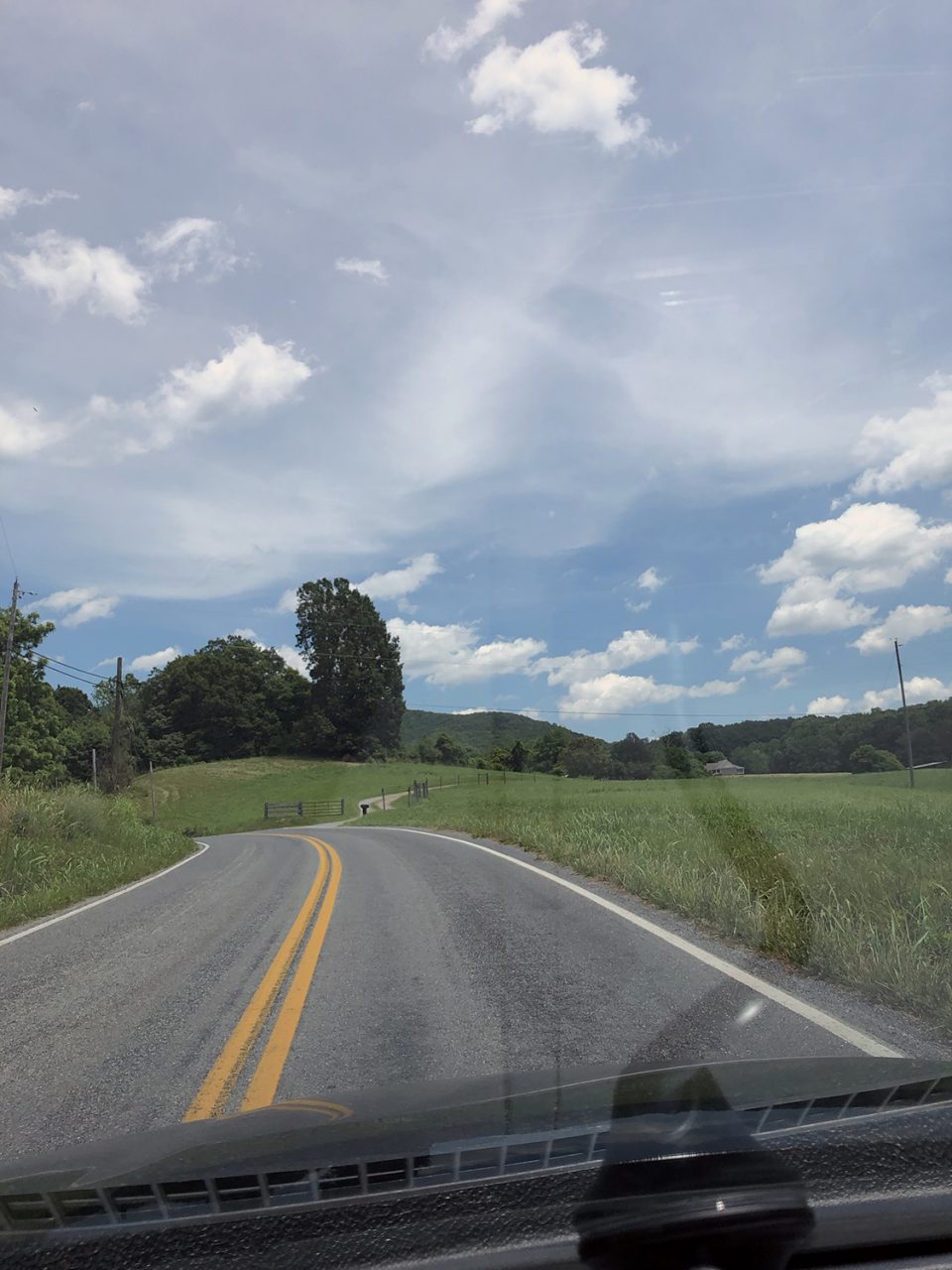
How do I find these abandoned places?
A lot of people ask me how I find abandoned places. The truth is, I find them in a variety of ways. Sometimes I find abandoned old houses in the woods on hikes, just purely by dumb luck. Sometimes from driving back roads.
Other times I find locations from research on Google, YouTube, flickr, social media pages, and even Google Street View. Sometimes I get tips from friends, or fans.
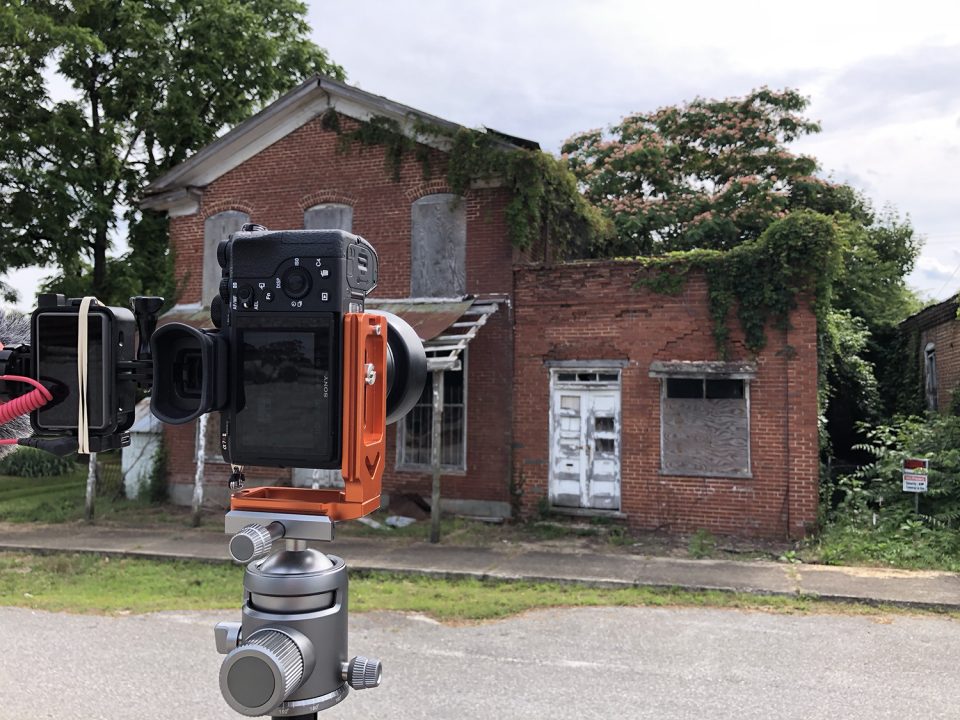
If you love photographs of abandoned places, please check out my book, Unloved and Forgotten: Fine Art Photographs of Abandoned Places
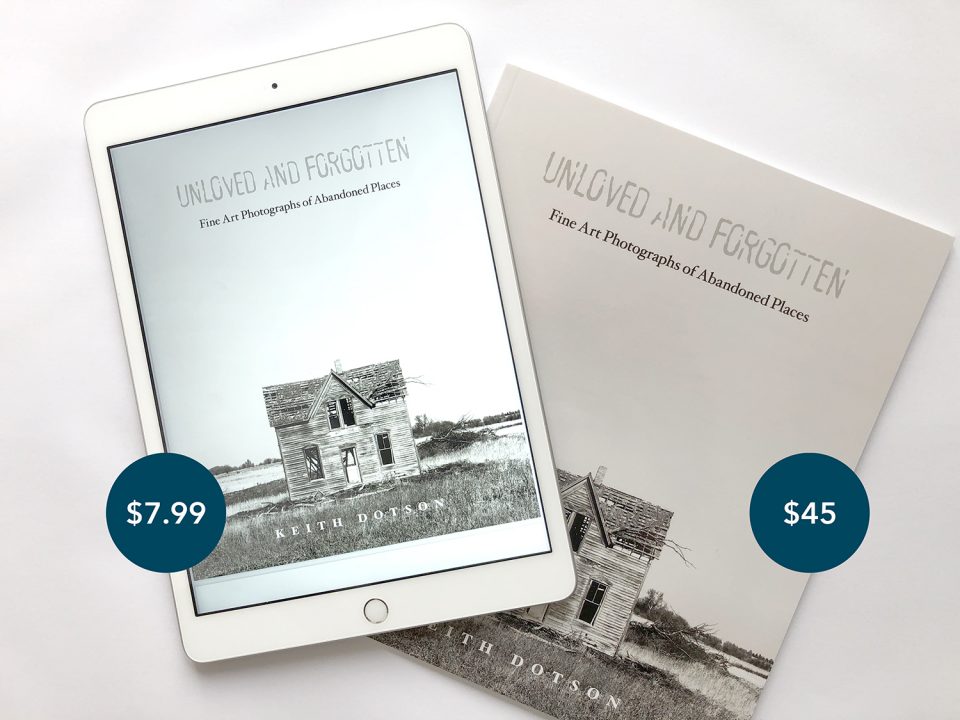
Buy direct from Amazon here.
Get a signed copy or a digital download from my website here.
History of the old ghost town at Pamplin City, Virginia
Pamplin City has a population less than 250 people now, but it was historically a thriving community. It was originally called Merriman’s Shop after a shoe shop located in the vicinity as early as the 1820s. A post office was established there in 1826, but people had lived in the area since the early 1700s.
Nicholas Pamplin donated a large tract of land in the 1850s, so that a railroad line could be constructed, and the town was formally named Pamplin City in 1874 in his honor. It was also known as Pamplin Depot for a while. The old train depot still stands on Main Street and has been renovated into a library. The town had many churches, four doctors, a flour mill, a lumber mill, a shop for making tobacco barrels, a blacksmith shop, a livery stable, a silent movie theater, restaurants, a tavern, and more. I don’t know which of these were located here on Main Street, but they were all destroyed in a big fire in 1909, which resulted in a city ordinance that new construction must be made of brick. So, while I don’t have any definitive dates on these buildings, probably none are earlier than 1909.
Scroll down for more detail about what each building would have been used for in the 1970s.
Pamplin clay tobacco pipe industry
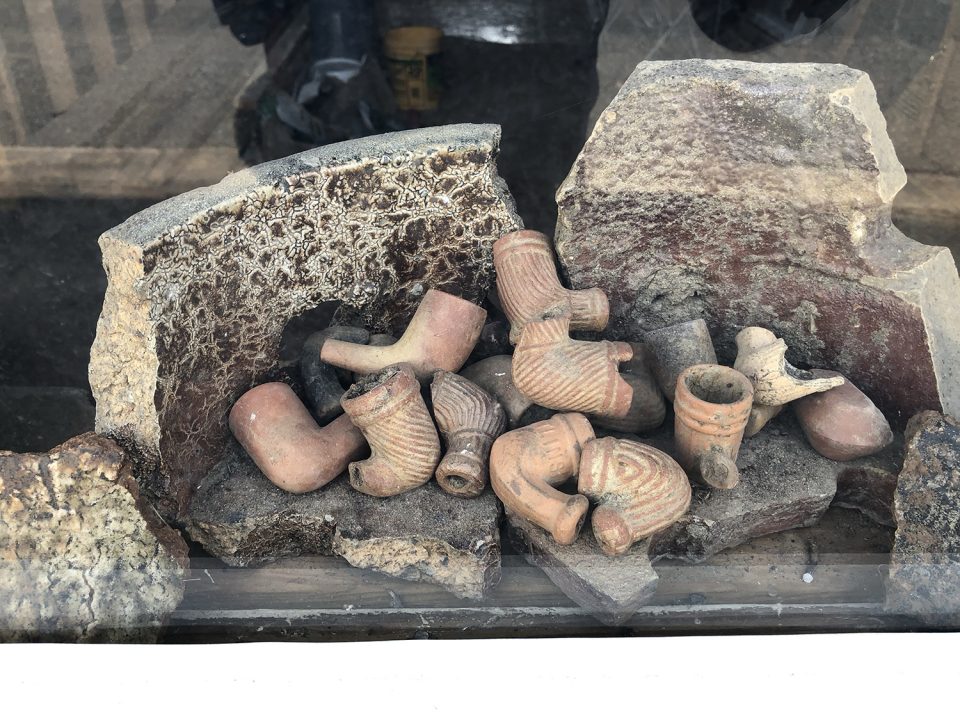
Pamplin was a major maker of clay pipes from the 1860s until 1952, when the last factory closed. They literally made millions of clay smoking pipes here. Before the pipe factories were established, individuals made hand-made clay pipes in the region since the early 1700s, and it’s said that Thomas Jefferson and Benjamin Franklin both smoked tobacco with Pamplin clay pipes.
How the Pamplin clay tobacco pipes were made
Pamplin’s local clay was mixed with water for the proper consistency, then pressed into lead molds. With the use of special tools, the molded pipe bowls were then extracted from the mold, and baked in the sun or in kilns. Hollow reeds from nearby Virginia wetlands were inserted into the bowl, held in place with a cork. The baked clay bowl was polished with beeswax or lard, and ready for sale. These pipes were cheap and designed to be disposable, used only once or a few times.
Remains of one of the old pipe factories still stands. You can see photographs and read about it here.
Remains of ironwork storefronts
All of the buildings are brick, as required by that 1909 city ordinance I mentioned earlier — some still feature parts of old ironwork façades like those made by Mesker Brothers, or George L Mesker, and many other companies in the late 1800s. In those days, you could mail order from a catalogue a complete, fancy iron storefront for less than $200. It would be shipped by rail, or boat, or wagon, to be installed on the front of your otherwise drab main street commercial building. There are still some very fine and well maintained examples in many cities and towns across the US. but here in Pamplin, the iron work is fragmented, bent, and pulling loose.
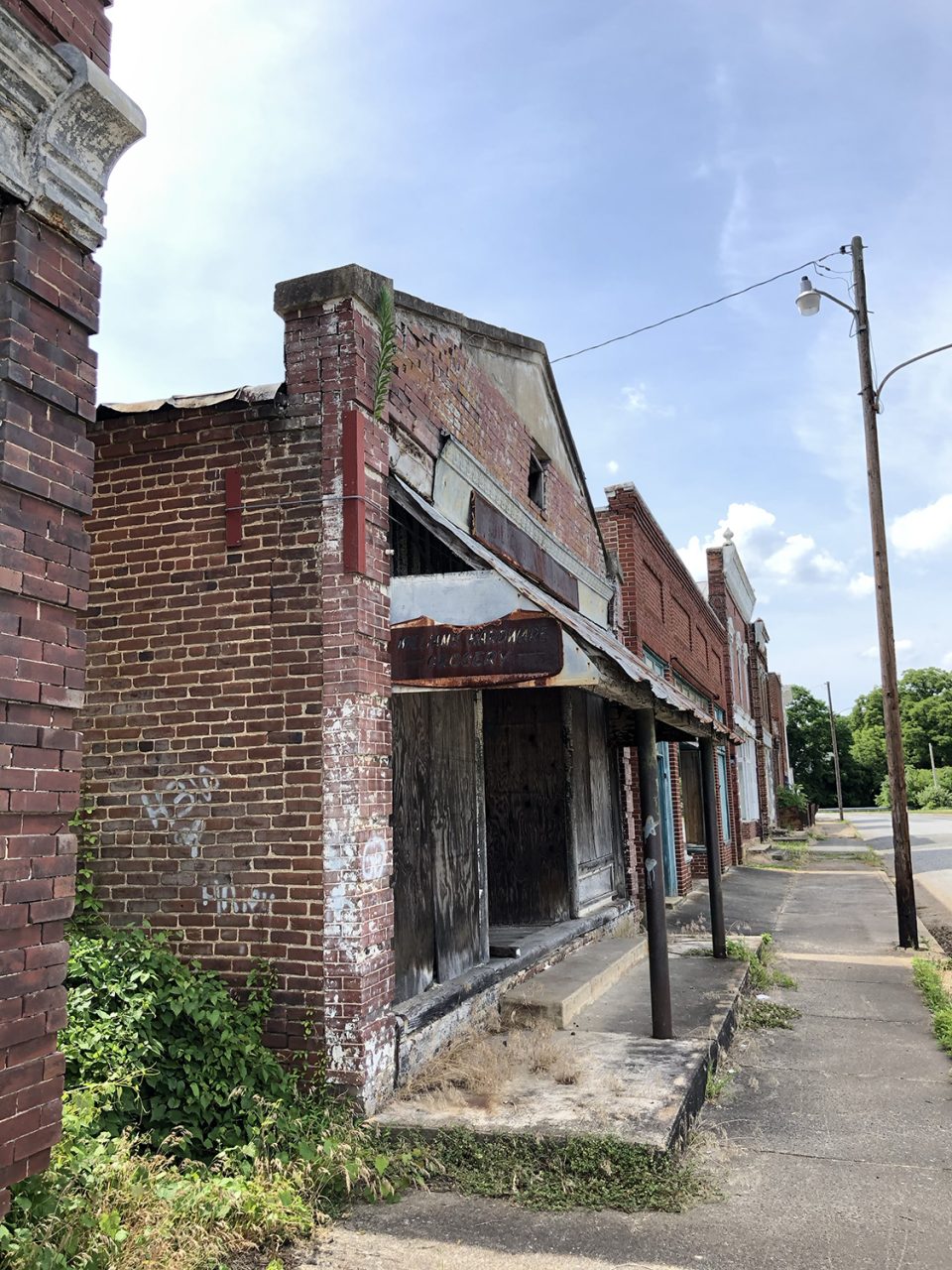
Williams Grocery
NOTE: This section has been updated with corrections supplied in the comments by a relative of the Williams brothers.
Only one of the buildings has signage remaining — above and on the sides of the curved metal awning are rusty signs that say “Williams Hardware and Grocery”. This was a general store established by Howard Williams, Sr. and his brother, Harry. Howard bought out Harry in the 1940s and operated the store for another 40 years. Harry was also the postmaster.
Howard’s youngest brother, Woodrow “Woody” Williams was a professional baseball player who played with the Brooklyn Dodgers and the Cincinnati Reds. Woody also played in the minor leagues in Nashville in 1939 for the Nashville Volunteers, a team that no longer exists. Woody Williams retired from baseball in 1949 and operated the Williams Grocery, down the street from Howard’s store in Pamplin, for 30 years. He died in 1995 at age 82.
More information about Pamplin City’s former downtown businesses
The following detailed information about downtown businesses was extracted from a comment at the bottom of the blog post. the commenter said she lived in Pamplin City until 1984 and said this information would have applied to the early 1970s. See her exact quote with additional details in the comment section. Huge thanks to Pam, for providing this excellent local insight.
This list follows the street from right to left. To see the entire street in one long, composite image, click here and scroll to page 30 (PDF).
- The white building was built later on and I believe was suppose to be used as the town office, beside it is the old post office (years later was purchased by Dan Tolbert)
- Beside the old post office was the snack bar operated by Leoda Vaughn
- Beside the snack bar was a workshop that made kitchen cabinets and such
- Use of the the building beside that is unknown — it may have already been empty
- The building beside that one was Williams Grocery, owned by Woodrow Williams (she called him the “nicest man you could ever meet!”)
- Beside that was Williams Hardware (she cant remember Howard Williams, but she does remember Mrs. Carrie Williams and two of her sons, Bruce and Randy)
- Beside the hardware store was the old pool hall which was owned by Mr. Lee Vaughn
- Beside the pool hall was R&K Grocery (owned by Hambone Richardson and Mr. Kress)
- The building next R&K Grocery was eventually bought by Dan Tolbert. It had been an antiques store and auction house. In the back of that building, Mr. Tolbert eventually opened another pool hall, operated by Mr. Wade Baldwin
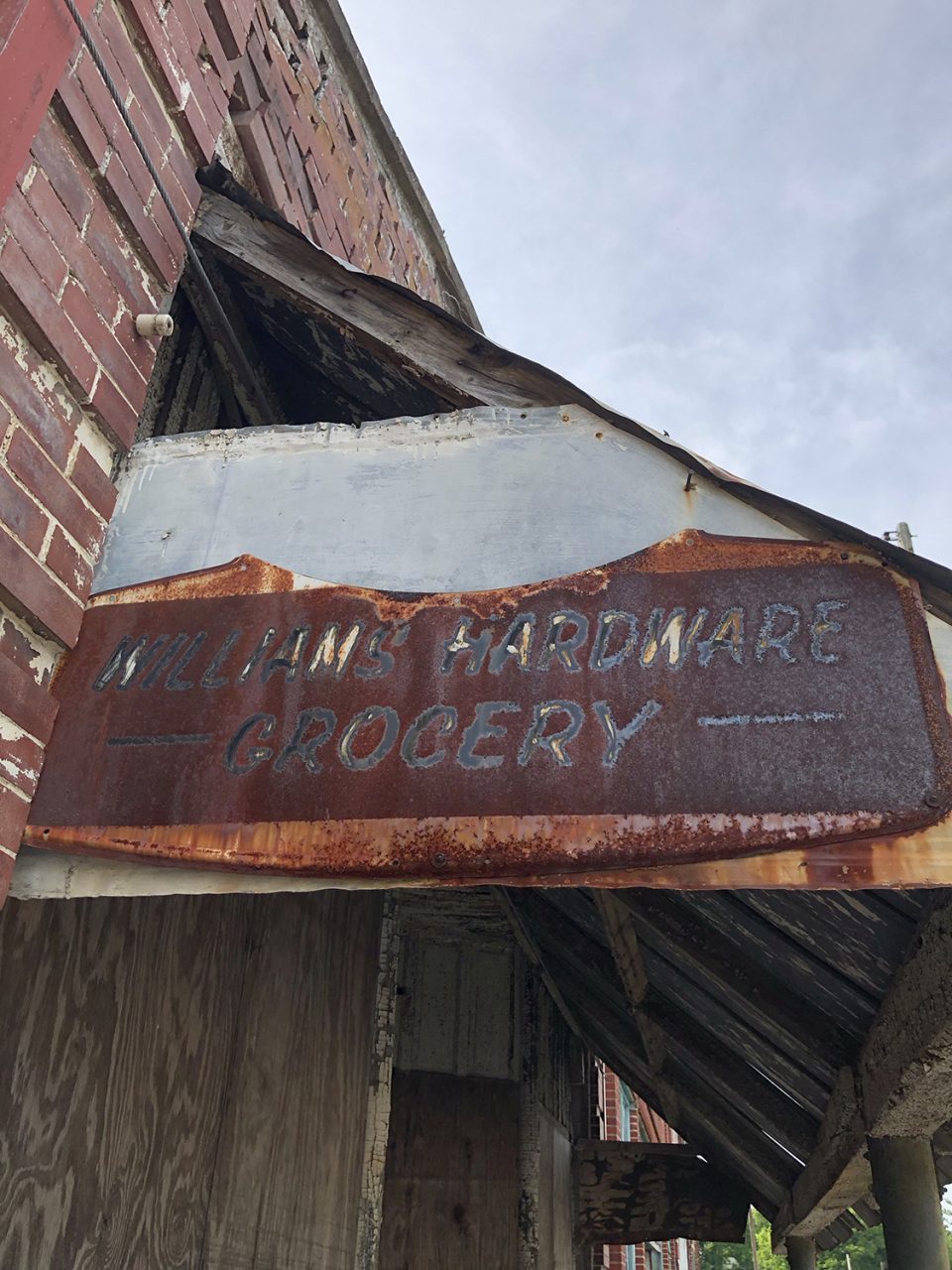
What made Pamplin’s old Main Street become a ghost town?
I don’t know specifically what happened to cause Pamplin’s old Main Street to become a ghost town, but I suspect it was the closing of the pipe factories, combined with the loss of railroad stops.
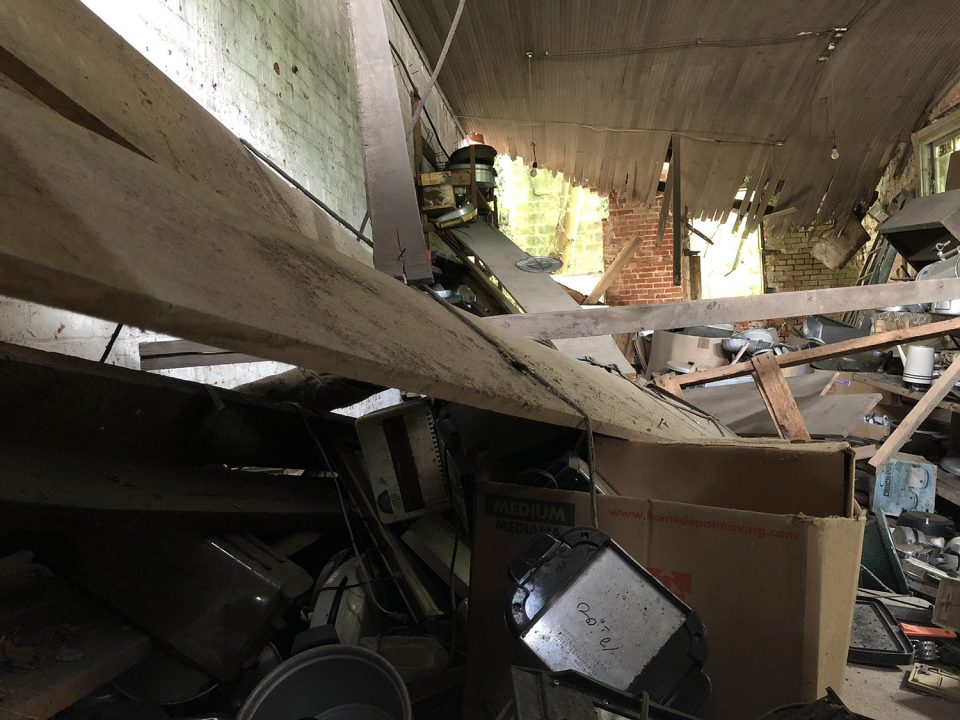
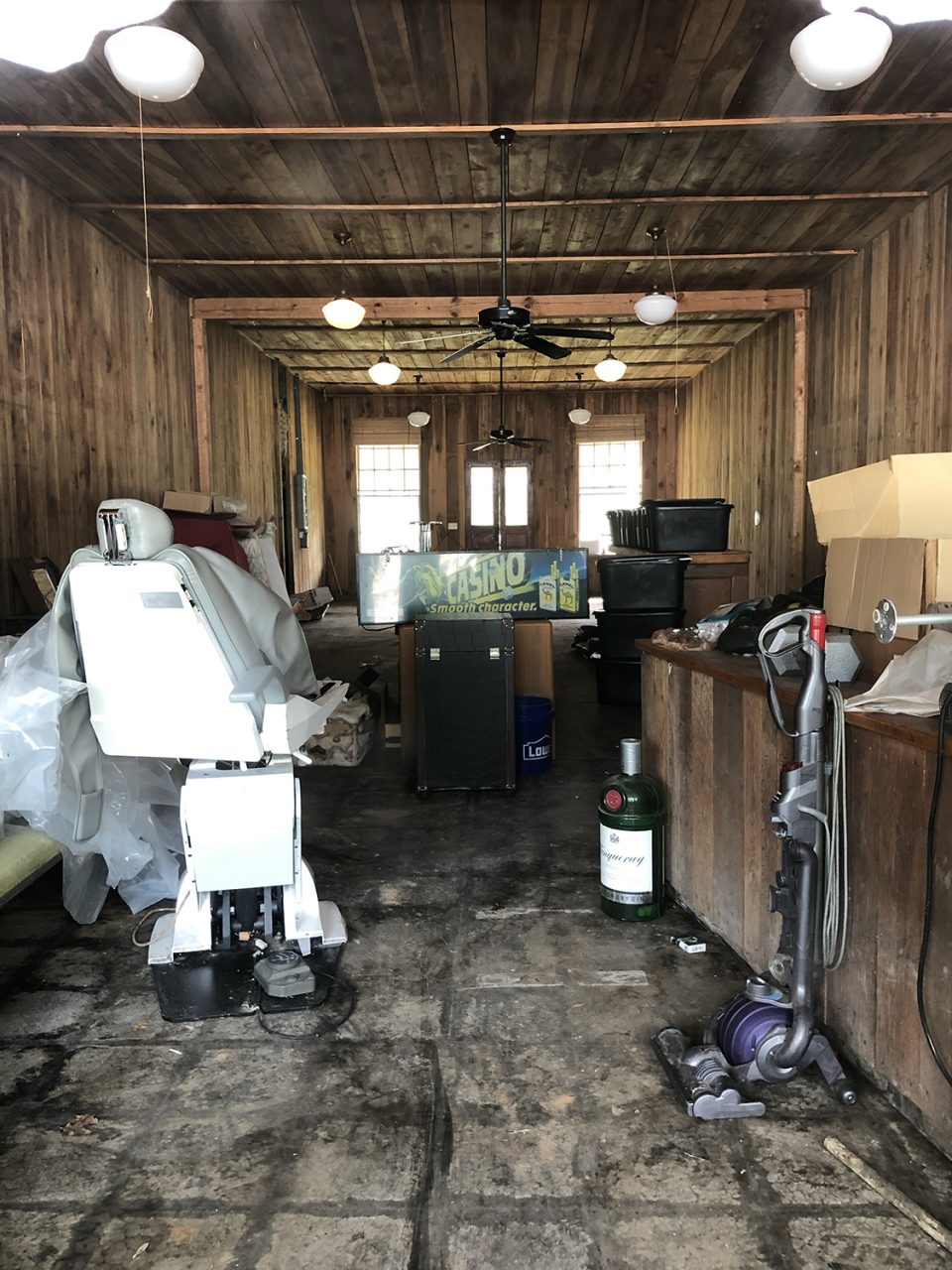
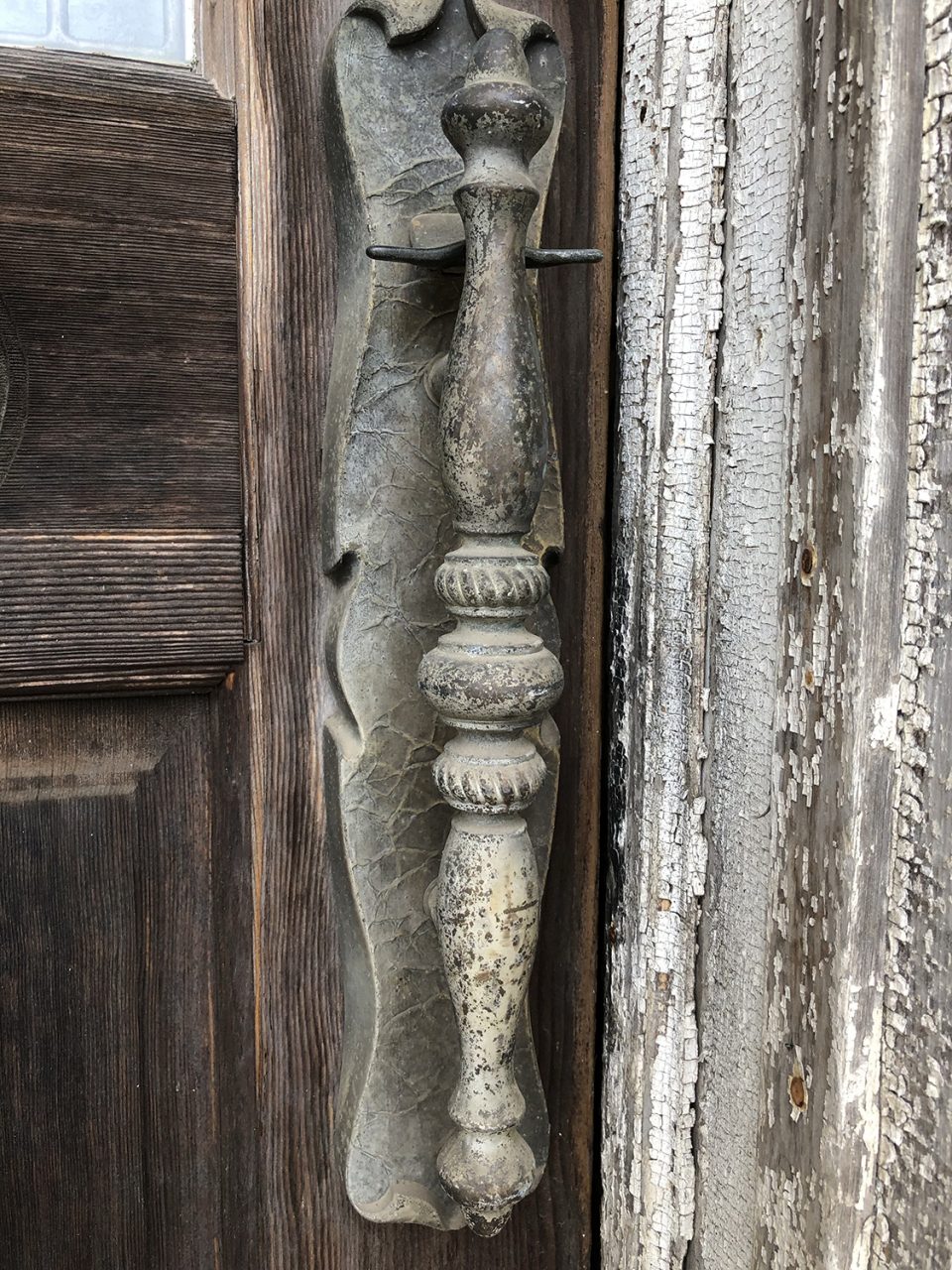

Black and white photographs of the abandoned buildings of Pamplin City, Virginia
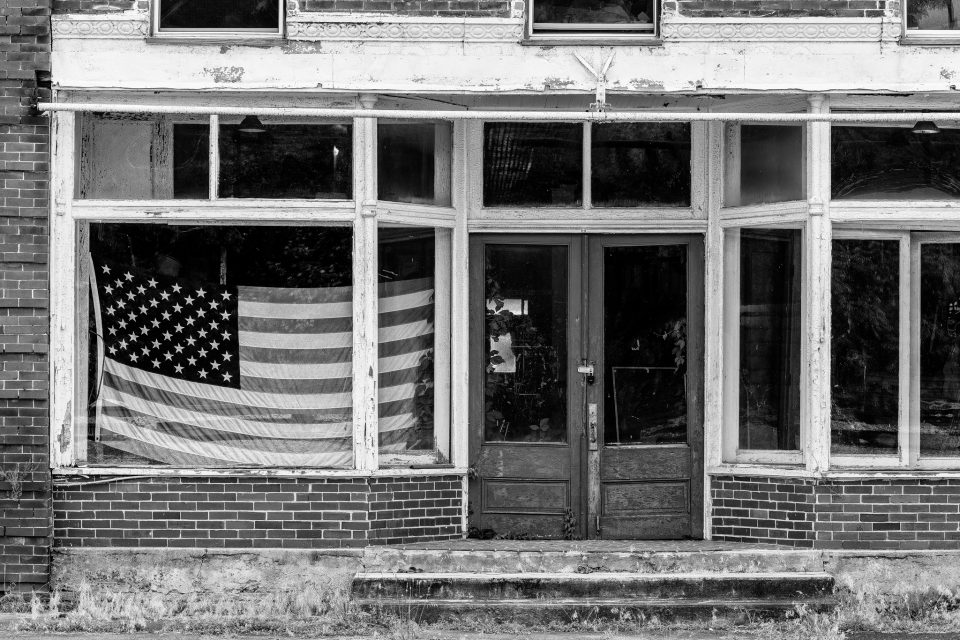
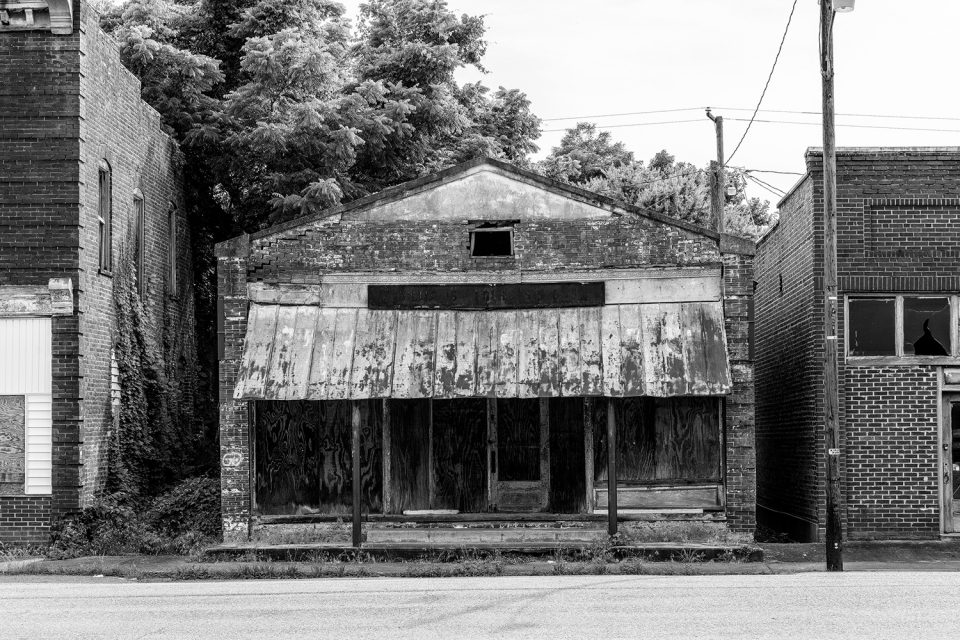
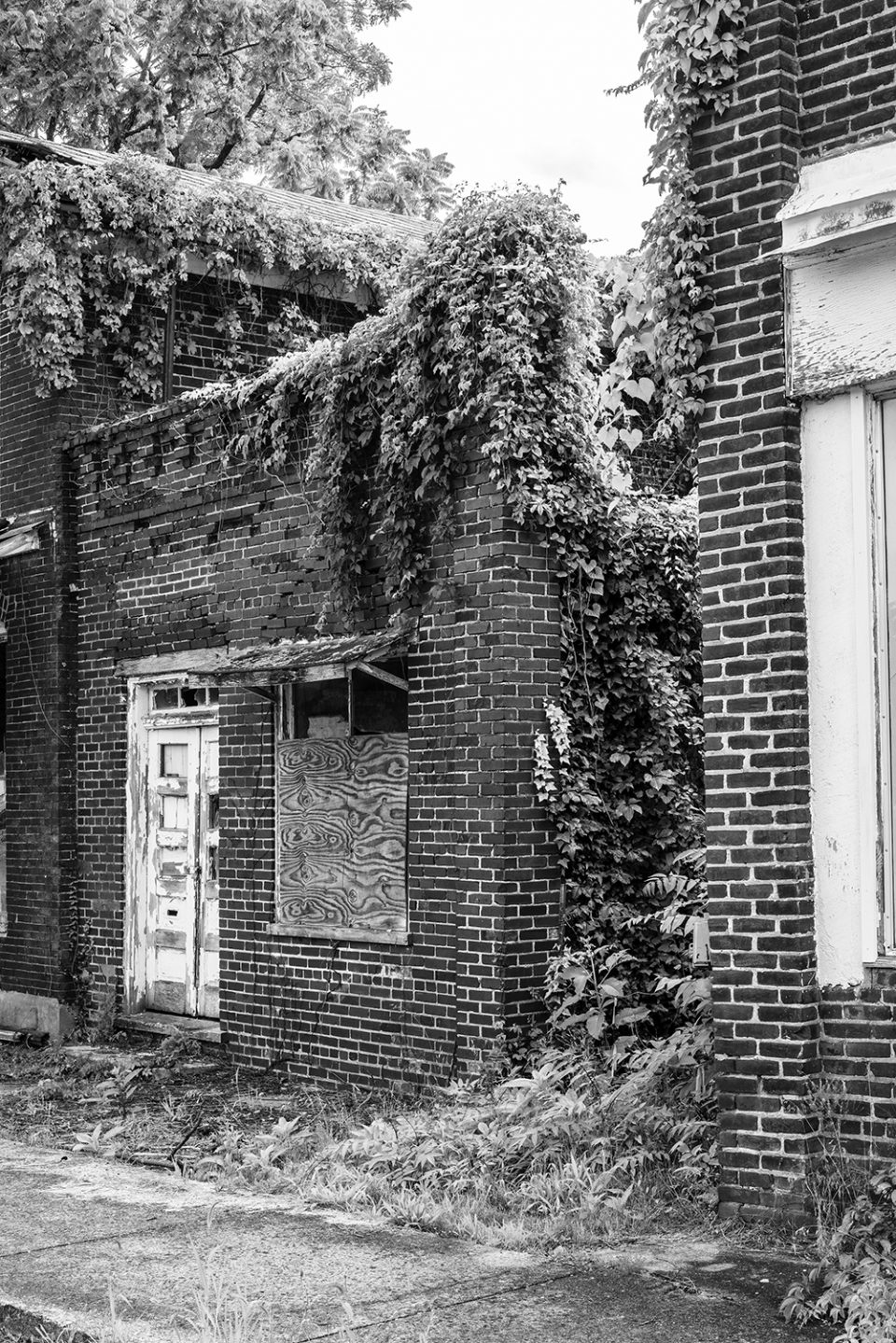
See all my photographs of abandoned places on my main website here
Thanks for reading!
Be sure to visit me on Facebook, Instagram or Pinterest, or on my website at keithdotson.com.
~ Keith
Sources
Appomattox Virginia Heritage, page 15, accessed via Google Books
“Pamplin Entryway Designs,” Virginia Polytechnic Institute and State University, October 2012
Southern Roads Traveler Facebook Page
Woodrow Williams, Baseball-Reference.com
Woody Williams (infielder), Wikipedia

Beautiful pictures…I miss the area and people, as I lived there for a few years. I thought someone purchased these buildings a couple years ago to renovate them and open up businesses again? Not sure what happened.
It seems a couple of the buildings are being cared for. Others, not so much. I agree it’s a beautiful area though!
Your information regarding Williams’ Hardware and Grocery is incorrect. It was owned by my grandfather, Howard Williams, Sr. and his brother, Harry. After my grandfather “bought out” Harry’s share of the business in the 40’s, he was the sole proprietor for another 40 years. My great-uncle was Woodrow Williams. He was my grandfather’s youngest brother. After playing professional baseball, he came back to Pamplin and opened a grocery store down the street from my grandfather’s.
I just came across an old letter from a Goodwill purchase of stamps that has a postmark on it from Pamplin, from Mar 26, 1968.
Very cool! I tried to buy some of the old clay pipes on EBay but they go for high prices.
Thank you for sharing the story and photos! My family owns a farm on the out skirts of Pamplin City! My husband and I got married at the Elon Baptist Church in 1989.
Nice to hear from you! I enjoyed my visit to Pamplin City a lot.
Hi Thanks for sharing! I use to live in Pamplin city, but moved away in 1984. Not sure what exactly what you know about the businesses that use to be there, but here is what I can remember from the early 70’s. The white building was built later on and I believe was suppose to be used as the town office, beside it is the old post office (years later was purchased by Dan Tolbert) beside the old post office use to be the snack bar and it was operated by Leoda Vaughn, beside the snack bar in that building they use to make kitchen cabinets and such, the building besise that one i cant remember what that one was used for it may have already been empty. The building beside that one was Williams Grocery owned by Woodrow Williams ( nicest man you could ever meet! ) beside that was Williams Hardware ( I cant remember Mr Howard Williams but I do remember Mrs Carrie Williams and two of the sons Bruce and Randy they were always so nice and polite! beside the hardware store was the old pool hall which was owned by Mr Lee Vaughn beside the pool hall was R&K grocery (owned by Hambone Richardson and Mr Kress) and the building beside R&K was eventually bought by Dan Tolbert they use to sell antiques and various other things and also had auctions, in the back of that building Mr. Tolbert eventually opened another pool hall which was ran by Mr Wade Baldwin.
It is a shame to see main street look so run down!
That is such terrific information! Thank you for sharing.
Hi. My name is Dorsey Patterson.I was born in 1960. Pamplin Va has been my hometown all of my life. All of the information about Woodrow Williams store is all wrong. Woodrow’s store no longer exists. it was torn down in the 1970’s when they built the Railroad bridge in Pamplin.He had a store where the road crosses over highway 47. There is a photo of his store in the Pamplin Depot. The store that they said was his store was run for awhile by Howard Williams Jr. And before that it was W.H. Ligon and Sons before it became a Cabinet Shop.Also the little white building beside the old Post Office was a Barber Shop at one time. My cousin used to work at Woodrow Williams store pumping gas and loading groceries for customers.
You are right, Dorsey! My mother is Joan Williams Jurney, Bruce and Randy’s older sister.